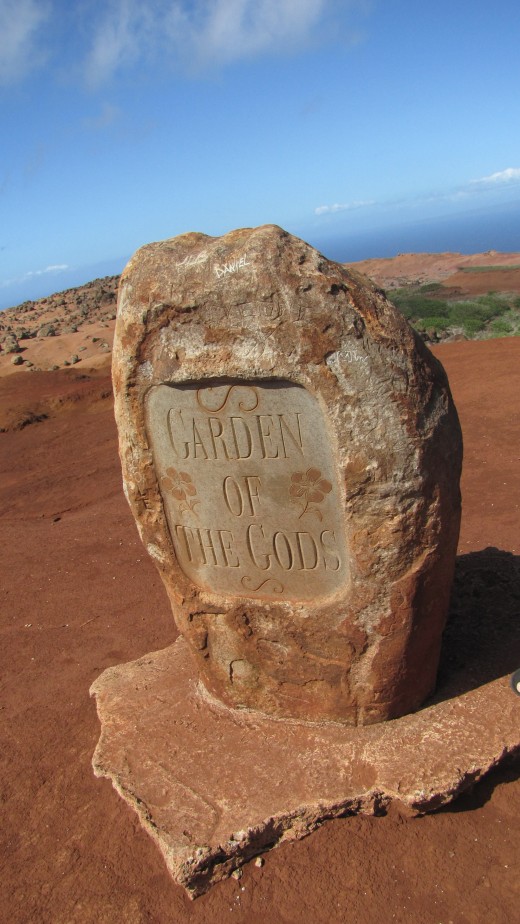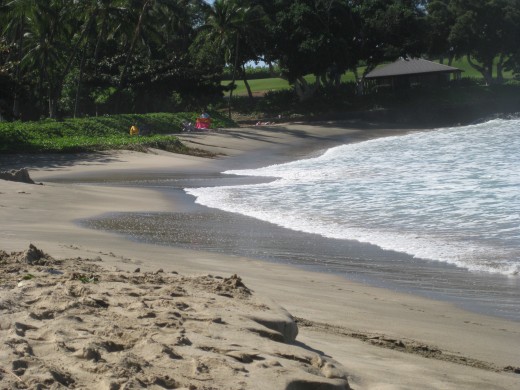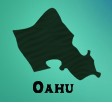- HubPages»
- Travel and Places»
- Visiting North America»
- United States
The Islands of Hawaii
Have you ever been to Hawaii?
Mokupuni O Hawaii: The Hawaiian Islands
The Hawaiian Islands are located in the South Pacific Ocean and now make up a state in the United States of America. Although there are over 130 islands in the sandwich, archipelago, there are only eight that are inhabited and make up the state of Hawaii. The state flower is the yellow hibiscus and the state fish is the humuhumunukunukuapua'a, or trigger fish. Hawaii was once inhabited by Polynesians that migrated up to the islands in small canoes.
The islands were then inhabited by whalers, fishermen, merchants, and missionaries. For a while, the islands were under British rule, but after Pearl Harbor (December 7th, 1942), the United States made plans to claim Hawaii as their own. In 1951, Hawaii became the fiftieth state. In 1993, Bill Clinton apologized to the descendants of Native Hawaiians for taking their land illegally.
The eight islands that make up the state are all unique and have their own atmosphere and history. The article below will explore each island and educate you about their differences and similarities.
Islands of Hawaii Table (Flowers, Nicknames, Colors, Elevations)
Island
| Nickname
| Color
| Flower
| Area
| Elevation of Highest Peak
|
|---|---|---|---|---|---|
Hawai'i
| The Big Island
| Red
| Red Ohi'a Blossom
| 4,028 sq mi
| 13,796 ft
|
Maui
| The Valley Isle
| Pink
| Lokelani (Rose)
| 727 sq mi
| 10,023 ft
|
Lana'i
| The Pineapple Isle
| Orange
| Kauna'oa Blossom
| 140.5 sq mi
| 3,366 ft
|
Koho'olawe
| The Target Isle
| Grey
| Hinahina
| 45 sq mi
| 1,483 ft
|
Moloka'i
| The Friendly Isle
| Green
| Pua Kukui
| 260 sq mi
| 4,961 ft
|
Oahu
| The Gathering Place
| Yellow
| Pua 'ilima
| 597 sq mi
| 4,003 ft
|
Kaua'i
| The Garden Isle
| Purple
| Mokihana Berry
| 552 sq mi
| 5,243 ft
|
Ni'ihau
| The Forbidden Isle
| White
| Pupu (Small Sea Shells)
| 69.5 sq mi
| 1,250 ft
|




Hawaii: The Big Island
Hawai'i is the biggest island in the archipelago and is also the youngest. This island is more commonly referred to as "The Big Island," because of its size. It is home to one of the world's most active volcanoes, Kilauea, and is the landing place of the first Polynesians to travel to Hawaii.
The Big Island has a rich history of war, peace and monarchy. King Kamehameha was said to be born on the island and trained by ancient warriors to eventually rule the entire island. In 1810, he became ruler of all eight islands and united them under the "broken paddle law". This law is similar to the good samaritan story, where if you see someone in trouble, you have to stop and help.
The Big Island is made up of five volcanoes, each with their own history of eruption. On this island, you can see some of the most spectacular valleys, beautiful white and black sand beaches, and lush mountain ranges.
Planning Your Trip to the Big Island




Maui: The Valley Isle
Maui is a beautiful island with a large volcano named Halelakala, or "house of the rising sun". At the peak, you can watch the sunrise as many do. This site is very popular because it is the setting for one of Hawaii's most well-known legends.
Maui was a young boy that would watch his mother work on the fields, but she had little daylight to finish all of the work that had to be done. To Maui, it seemed like the moon would slowly creep over the sky, while the sun would dart from one end of the horizon to the other. One day, Maui climbed to the top of Haleakala and watched as the sun snuck over the horizon. Quickly, he threw a lasso over the sun and held it in the sky. He said, "Sun, you need to stay in the sky longer. My mother cannot finish her work in the dark." The sun agreed to move more slowly in the summer and Maui let him go. The moon agreed to spend less time over Hawaii and the balance between night and day was formed.
Maui is one of the most popular islands for a vacation. You can see the beautiful aquarium, which focuses on Hawaiian reef fish and other marine life. You can also visit the old sugarcane plantation and ride a train while learning about Maui's history.


Satelite Image of Koho'olawe
Koho'olawe: The Target Isle
Koho'olawe (koh-ho-o-lah-vay) is one of the smallest islands and is hardly populated. This island used to be one with Lana'i, Maui and Moloka'i, but is now on its own due to uplift and erosion.
During Ancient Hawaiian times, this island was lush with streams, rainforest and heavy rainfall. Ancient Hawaiians inhabited the costal areas for the prime fishing spots.
In the early 1900's, America used this island as a missile testing area and since that time. They were ordered to stop in the mid-1900s and since then, the land has only been used as a basalt quarry.



Lanai: The Pineapple Isle
Lana'i (lah-nah-ee) is known as the Pineapple Island because it hosts the Dole plantation. Lana'i is filled with interesting history including the story behind Shipwreck Beach (photo above). Shipwreck Beach has a large oil tanker, sitting in the water about a mile off the coast. Although many ships crash landed in this area due to the shallow reef, this oil tanker was purposely dumped in the area by its crew, who abandoned their duties and fled to the island.
Garden of the Gods is also a beautiful Lana'i landmark. The area is known as "Mars on Earth" by some because of the abundance of rich, red rocks spread on the mountainside near the coast. The article below shows images of this area and other breath-taking island features.
- Discovering Lana'i
Lana'i, Hawaii is a beautiful place to visit. The weather is generally colder, but it can be very nice in the summer time. This article is a collection of photos from the island's most exciting locations including shipwreck beach and Kohele Lodge.


Moloka'i: The Friendly Isle
Moloka'i (moh-low-kah-ee) has a single road that goes around the whole island as is only 21 miles long. The island has a large mountain range in the middle of it, which makes it very hard to use. The tiny population on Moloka'i is sustainable through the various tourists that visit this small, but gorgeous island.
Surrounding Moloka'i is an underwater plateau, which keeps the coastline shallow and full of marine life. The Vatican recognizes this island as a place of miracles. In the early 1900s, Moloka'i was used as a place where the infected were exiled. This community was predominantly made up of individuals with leprosy (Hanson's disease) and was called The Kalaupapa Colony and was supervised by members of the Roman Catholic Church. Sadly, many of the infected individuals jumped to their deaths over a large cliff at Kalaupapa, but some were miraculously healed.



Oahu: The Gathering Place
Oahu is probably the most famous island due to hosting the state capital as well as its large population. Oahu is known by locals on neighboring islands as "the city" because it is unlike all of the others. Skyscrapers line the coast of this tiny island, home to Waikiki, a preferred vacation destination by many tourists.
Oahu is also home to Diamond Head, a popular geological formation. Shows like Hawaii 5-0 and Lost were filmed on this island, which causes many visitors to flock here for holidays and vacations.



Kaua'i: The Garden Isle
Kaua'i (kah-wah-ee) was named by an Ancient Hawaiian navigator that wanted to name it after his son so he named it "Taua'i," or "place around my neck." Kaua'i was the name later adopted by the neighboring islanders since Kauaiian inhabitants are known for their distinct dialect that changes K's to T's.
When King Kamehameha united the islands, Kauai and Ni'ihau's ali'inui (or, chief), Kaumuali'i, would not obey the kings decision and told his islanders to never follow the law of King Kamehameha and to see him as their king. When King Kamehameha threatened to battle them, the islanders would not stand strong beside Kaumuali'i and he gave in resulting in the Kingdom of Hawaii.



Ni'ihau: The Forbidden Isle
Ni'ihau (nee-ee-how) is a private island owned by the Robinson family. Elizabeth Sinclair bought the island in 1864 from the Kingdom of Hawaii for her descendants. The family still manages the island today.
This island is famous for the "Ni'ihau Incident", which happened right after Pearl Harbor. The island didn't have phone lines or electricity, so they didn't know about the attack until they heard about it on the radio the next morning. After hearing the news, they discovered that a Japanese fighter jet had crash landed on the island and three Japanese men were running around the island, terrorizing all that crossed their path.
Two of the village's most well-known residents were captured by the men and held hostage, but they were able to shoot two of the men and were punished for their actions. The Japanese man who had survived received his US citizenship years later.











